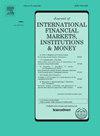ESG ratings: Disagreement across providers and effects on stock returns
IF 6.1
2区 经济学
Q1 BUSINESS, FINANCE
Journal of International Financial Markets Institutions & Money
Pub Date : 2025-03-03
DOI:10.1016/j.intfin.2025.102133
引用次数: 0
Abstract
This paper examines the ESG ratings assigned by two providers, LSEG and Bloomberg, to companies listed in Europe and the United States from 2010 to 2020. The objective is to document the path of the ESG ratings over time, the divergence of opinions across providers, and whether the ESG dimension affects stock returns. The ESG scores have increased significantly over time, both in Europe and the United States, and higher scores are common for larger firms with low credit risk and lower equity returns. Once risk factors have been considered, the ESG dimension does not affect stock returns. The divergence of opinions across rating providers is vast and mainly increasing, especially in the US and for the social component. A wide divergence of opinions on the ESG score does not favour the correct pricing of the ESG risks and weakens the link between investors’ ESG preferences and the performance of stocks with better ESG metrics. However, disagreement across providers should not be considered only negatively as it can enrich the information set and avoid rating over-reliance (which proved to be a vital issue in the 2007–2009 financial crisis).
ESG评级:供应商之间的分歧及其对股票回报的影响
本文考察了2010年至2020年LSEG和彭博社两家评级机构对欧美上市公司的ESG评级。我们的目标是记录ESG评级随时间的变化轨迹、评级机构之间的意见分歧,以及ESG维度是否会影响股票回报。随着时间的推移,欧洲和美国的ESG得分都有了显著的提高,对于信贷风险较低、股权回报较低的大公司来说,得分较高是很常见的。一旦考虑了风险因素,ESG维度并不影响股票收益。评级机构之间的意见分歧很大,而且还在不断扩大,尤其是在美国和社交部分。对ESG评分的广泛分歧不利于正确定价ESG风险,并削弱了投资者的ESG偏好与ESG指标较好的股票表现之间的联系。然而,供应商之间的分歧不应该被认为是消极的,因为它可以丰富信息集,避免评级过度依赖(这在2007-2009年金融危机中被证明是一个至关重要的问题)。
本文章由计算机程序翻译,如有差异,请以英文原文为准。
求助全文
约1分钟内获得全文
求助全文
来源期刊
CiteScore
6.60
自引率
10.00%
发文量
142
期刊介绍:
International trade, financing and investments, and the related cash and credit transactions, have grown at an extremely rapid pace in recent years. The international monetary system has continued to evolve to accommodate the need for foreign-currency denominated transactions and in the process has provided opportunities for its ongoing observation and study. The purpose of the Journal of International Financial Markets, Institutions & Money is to publish rigorous, original articles dealing with the international aspects of financial markets, institutions and money. Theoretical/conceptual and empirical papers providing meaningful insights into the subject areas will be considered. The following topic areas, although not exhaustive, are representative of the coverage in this Journal. • International financial markets • International securities markets • Foreign exchange markets • Eurocurrency markets • International syndications • Term structures of Eurocurrency rates • Determination of exchange rates • Information, speculation and parity • Forward rates and swaps • International payment mechanisms • International commercial banking; • International investment banking • Central bank intervention • International monetary systems • Balance of payments.

 求助内容:
求助内容: 应助结果提醒方式:
应助结果提醒方式:


